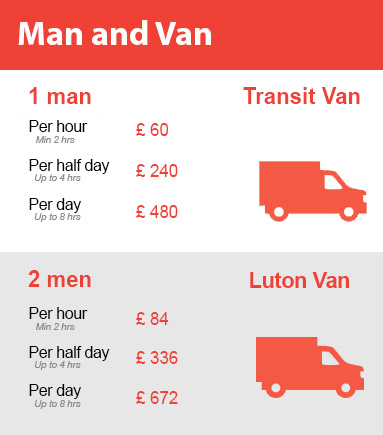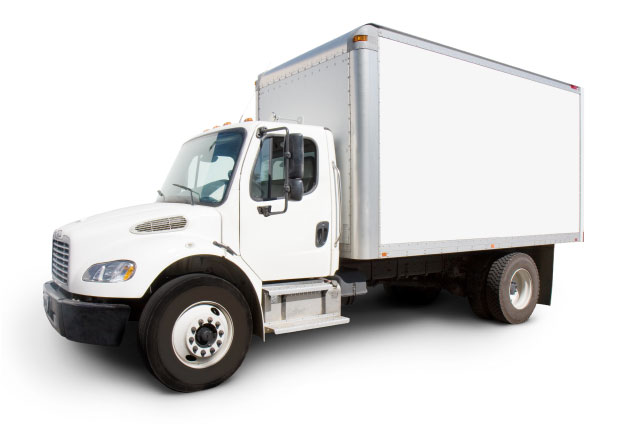Conquer Heavy Lifting with Solo Techniques
Posted on 06/06/2025
Conquer Heavy Lifting with Solo Techniques: The Ultimate Guide
Heavy lifting is often perceived as an activity that requires a team, but with the right knowledge and techniques, solo lifting is entirely possible--and often highly efficient. Whether you are moving furniture, construction materials, or just an awkward appliance, mastering solo heavy lifting techniques will save you time, energy, and reduce your risk of injury.
In this comprehensive guide, we'll explore practical solutions to conquer heavy lifting when working alone, offering actionable tips, safety guidelines, and innovative tools that will turn you into a one-person moving team.

Why Mastering Solo Heavy Lifting Matters
- Self-reliance: Not every situation allows for extra hands; being able to lift solo enhances independence.
- Time and cost-saving: Avoiding the need to call for assistance can save both time and financial resources.
- Increased productivity: Efficient solo lifting enables you to complete tasks faster and more effectively.
- Essential for various professions: From contractors to delivery drivers, solo lifting is a crucial skill.
For these reasons, learning how to conquer heavy lifting with solo techniques gives you a significant edge in professional and everyday scenarios. Let's dive into the strategies and steps you can take to make solo lifting safer and simpler.
Preparation: The Key to Efficient Solo Heavy Lifting
1. Assess the Situation and the Object
- Examine the item's weight, size, and balance. Check for handles, grips, or any points that offer a better hold.
- Remove obstacles from your path to ensure a clear route from start to finish.
- Plan your resting points if you're covering a long distance.
- Check your surroundings: Wet floors, uneven surfaces, and clutter greatly increase the chance of mishaps during a heavy lift.
2. Choose the Proper Clothing and Gear
- Wear sturdy, closed-toe shoes with good grip to prevent slips.
- Avoid loose clothing that could get caught on objects during the lift.
- Consider weightlifting gloves for added grip and to protect your hands.
Essential Solo Lifting Techniques for Heavy Items
Mastering the correct technique is at the core of successful solo heavy lifting. Let's explore proven approaches:
Safe Lifting Fundamentals
- Keep a wide, stable base: Stand with your feet hip-width apart for better balance.
- Bend at your knees, not your back: This allows your legs (your strongest muscles) to do most of the work.
- Keep the object close to your body: This reduces strain on your back and keeps the weight centered.
- Avoid twisting during the lift; instead, pivot with your feet if you need to turn.
- Lift slowly and smoothly: Quick, jerky movements greatly increase the risk of muscle strain and injury.
The Rock-and-Slide Approach
If a heavy object is too awkward to pick up in one go, rocking and sliding is a valuable solo technique:
- Rock the object gently to edge it over any lip or threshold.
- Slide the item across the floor using a towel, furniture dolly, or gliding pads to reduce friction.
- This method minimizes lifting and leverages the idea of moving rather than carrying.
The Leverage Principle
Use a long, sturdy object--such as a crowbar or wooden beam--to act as a lever. By placing a fulcrum (like a small block) under it:
- Wedge the lever under the heavy load.
- Press down on the opposite end to raise the object gently.
- This is ideal for solo heavy lifting where lifting off the ground is necessary before repositioning or sliding.
Equipment That Makes Heavy Solo Lifting a Breeze
The right tools can transform the way you approach lifting tasks alone. Consider adding the following to your arsenal:
1. Dollies and Hand Trucks
- Appliance dollies have straps and wheels designed for moving large, heavy objects like refrigerators or stacked boxes.
- Platform dollies work well for bulky, flat-bottomed items.
- Folding hand trucks are portable and perfect for transporting mid-weight loads.
2. Lifting Straps and Slings
- Forearm forklifts distribute weight evenly and allow you to leverage the strength of your arms and shoulders.
- Moving straps help you get under the object and lift with proper ergonomics.
3. Furniture Sliders
- Plastic or fabric sliders slip under heavy objects so you can push or pull them across floors with ease.
- These prevent scratches and reduce the force required for movement.
4. Pry Bars and Levers
- Whether for raising or shifting heavy items, leverage tools are essential for solo lifters.
5. Ramps and Rollers
- If you need to move an object up or down levels, portable ramps and rollers minimize vertical lifting.
- Pipe rollers are particularly useful for cylindrical objects or when you're moving appliances out of tight spaces.
Safety First: Protect Yourself While Lifting Heavy Loads Solo
Nothing is more important than your health and safety during a heavy lift. Follow these essential solo lifting safety tips:
- Know your limits. If an item feels too heavy or awkward, don't attempt the lift.
- Warm up before lifting. Simple stretches prep your muscles for strain.
- Wear protective gear. Gloves, back braces, and sturdy shoes protect vulnerable body parts.
- Lift in stages. Take breaks to avoid overexertion.
- Keep your path clear.
- Never rush the lift process. Haste often leads to injury.
- If lifting solo, let someone know when you're working with very heavy objects in case you need assistance.
Creative Ways to Tackle Specific Lifting Challenges
How to Lift and Move Large Furniture Alone
- Remove drawers, cushions, and detachable parts to lighten the load.
- If possible, stand the furniture on its end to reduce the width for easier navigation through doorways.
- Use furniture sliders or a dolly beneath each end.
- Leverage ramps or boards to slide over thresholds and stairs.
Moving Appliances Without Help
- Use a specialized appliance dolly with built-in straps.
- Slide a strong towel or moving blanket beneath for easy sliding over smooth floors.
- Secure doors and hoses with tape to prevent swinging or snagging.
Lifting Building Materials Solo
- Roll heavy barrels or large pipes rather than carrying them. Use rollers whenever possible.
- Break down multiple bags of cement, tiles, or bricks into smaller loads using a wheelbarrow or dolly.
- For awkward sheets of plywood or drywall, use carrying clamps or shoulder harnesses for better balance and support.
Post-Lift Recovery: Take Care of Your Body
After exercising solo heavy lifting techniques, give your body the care it deserves:
- Stretch immediately after lifting to ease muscle tension.
- Apply ice to sore muscles or any areas feeling pain.
- Stay hydrated; strenuous activity uses up fluids quickly.
- Use a foam roller to massage and relieve strained muscles.
- Pay attention to persistent aches as this could signal injury.
Expert Tips for Conquering Heavy Lifting with Solo Techniques
- Practice with lighter objects first--mastering your technique will help when engaging heavier loads.
- Invest in quality equipment--durability and security are worth the cost.
- Keep your core strong--core exercises boost lifting power and back safety.
- Always have a phone or alert button accessible during solo lifts in remote or risky environments.
- Keep your solo heavy lifting skills sharp by reviewing lifting protocols regularly.
When to Call for Help
Despite the effectiveness of solo lifting techniques, there are moments when even the best-prepared individual should not attempt a heavy lift alone, such as:
- The load exceeds your personal lifting capacity.
- The object is highly unstable or dangerous (e.g., containing hazardous materials).
- The path is hazardous (e.g., slick, cluttered, includes stairs).
- You experience pain while moving the object.
When in doubt, safety should always take priority over pride or expedience.

Conclusion: Unleash Your Solo Lifting Potential
By mastering the principles laid out in this guide, you can conquer heavy lifting using solo techniques with authority. Remember, preparation, proper technique, and the right equipment are the keys to safe and successful heavy lifting--no matter the situation.
The more you practice and refine these skills, the more confident and capable you'll become in tackling any heavy lifting challenge thrown your way. So gear up, stay safe, and make every heavy move a solo victory!
Frequently Asked Questions: Conquer Heavy Lifting with Solo Techniques
- What is the maximum safe weight to lift alone?
Most safety guidelines recommend 50 pounds as a ceiling for solo lifts for the average adult, but individual capacity varies. When in doubt, lighten the load or seek help. - Are lifting straps necessary for solo heavy lifting?
While not strictly necessary, lifting straps add significant safety, leverage, and control--especially for awkward or bulky items. - What should I do if I feel pain during a heavy lift?
Stop immediately. Continuing can cause serious injury. Assess your method, lighten the load, and consider alternate techniques.
Ready to put these solo techniques to the test? Remember: preparation, position, and practice are your three secret weapons in becoming a heavy lifting champion--even when you're doing it all alone.





